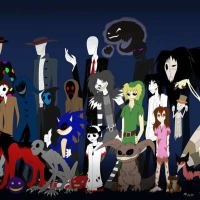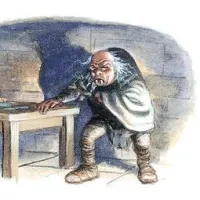On the morning of January 15, 1947, Betty Bersinger was pushing her 3-year-old daughter Anne in a stroller down the sidewalk, heading to a shoe repair shop. She paused when she noticed what she thought was a mannequin lying in the grass. But as she looked closer, she discovered it was something much more alarming: a mutilated corpse. Bersinger grabbed Anne and ran to a nearby house, where she used the telephone to call the police. Authorities arrived on the scene just a few minutes later, kick-starting what would become a years-long investigation (that many people are still trying to solve). The naked body Bersinger discovered was in horrifying condition. In addition to being cut completely in half at the waist, and having her intestines removed, Short’s mouth had been slashed from ear-to-ear, giving her face a ghastly, semi-smiling appearance known as a Glasgow Smile. Her body had also been washed clean before it was left to be found. Despite the severe mutilation, there was no blood at the scene, leading police to conclude that the young woman had been murdered somewhere else, drained of blood, then cleaned before the killer dumped her body. The young woman turned out to be a 22-year-old Hollywood hopeful named Elizabeth Short—later dubbed the “Black Dahlia” by the press for her rumoured penchant for sheer black clothes and for the Blue Dahlia movie out at that time.Who killed the Black Dahlia and why? It’s a mystery. The murderer has never been found, and given how much time has passed, probably never will be. The legend grows…
 Short’s murder quickly became a sensation, not only because of its location in the show biz capital, but also because the police worked in tandem with the press to disseminate clues in hopes of locating a suspect. Several people confessed, only to be later released for lack of evidence. Much speculation surrounded the details of Short’s life. Grieving after the death of a man she fell in love with, she reportedly befriended many men while frequenting jazz clubs, making it nearly impossible to pin down who she could have been with before she died. Her unsolved murder has spawned several movies, television specials, and books. One such account was written by Steve Hodel who implicated his own father George, a Los Angeles doctor, as the Black Dahlia murderer. Steve claims his father’s handwriting matches strange letters the police received, supposedly from the killer. He also uncovered photos of a woman who resembles Short in his father’s personal photo album, and believes George’s medical background would explain the precise, clinical cuts on the body. But some have discounted Steve’s claims since he started linking his father to other infamous unsolved murders, including the Zodiac killings.
Short’s murder quickly became a sensation, not only because of its location in the show biz capital, but also because the police worked in tandem with the press to disseminate clues in hopes of locating a suspect. Several people confessed, only to be later released for lack of evidence. Much speculation surrounded the details of Short’s life. Grieving after the death of a man she fell in love with, she reportedly befriended many men while frequenting jazz clubs, making it nearly impossible to pin down who she could have been with before she died. Her unsolved murder has spawned several movies, television specials, and books. One such account was written by Steve Hodel who implicated his own father George, a Los Angeles doctor, as the Black Dahlia murderer. Steve claims his father’s handwriting matches strange letters the police received, supposedly from the killer. He also uncovered photos of a woman who resembles Short in his father’s personal photo album, and believes George’s medical background would explain the precise, clinical cuts on the body. But some have discounted Steve’s claims since he started linking his father to other infamous unsolved murders, including the Zodiac killings.
Some linked the case to the Cleveland torso murders, so when Short’s death became national news, police officers in Cleveland felt an awful sense of déjà vu. Between 1934 and 1938, a serial killer had terrorized their city, claiming 12 victims—all of whom were grotesquely dismembered. Some theorized that the Ohio serial killer and Short’s murderer could be the same person, especially since—like Short’s killer—the perpetrator of what came to be known as the Cleveland Torso Murders was never caught. No charges were ever filed. It was also connected to a “Lipstick Murder.” One month after Short’s murder, another woman’s body was discovered in Los Angeles—and the circumstances mimicked the Black Dahlia’s case in a few ways. It all began with a stranger (in this case, a construction worker) stumbling upon the naked body of a dead woman in the grass. Jeanne French had dark hair like Short’s, and her face was also badly beaten. But this time, there was an unusual message scrawled on her stomach in bright red lipstick: “F**k You B.D.” Just below that were the letters “TEX.” People were quick to link the “B.D.” in the gruesome murder to the Black Dahlia, but the police were wary of officially connecting the two. Like Short, French’s murder was never solved. The FBI files on the Black Dahlia case indicate that many men were held for questioning—and some even took polygraph tests—but ultimately, no one was ever charged with Short’s murder. Still, a few names stand out …
In support of L.A. police, the FBI ran records checks on potential suspects and conducted interviews across the nation. Based on early suspicions that the murderer may have had skills in dissection because the body was so cleanly cut, agents were also asked to check out a group of students at the University of Southern California Medical School. And, in a tantalizing potential break in the case, the Bureau searched for a match to fingerprints found on an anonymous letter that may have been sent to authorities by the killer, but the prints weren’t in FBI files. In her book, Black Dahlia, Red Rose Piu Eatwell makes a convincing case for the identity of Elizabeth Short’s murderer, a conclusion she reached after years of exhaustive research. Eatwell’s theory centers on Leslie Duane Dillon, a bellhop and one-time mortician’s assistant who was briefly considered the case’s primary suspect, before police let him go. She writes that the Los Angeles Police Department knowingly let Short’s murderer off the hook because Sergeant Finis Brown, one of the case’s two lead investigators, was an alleged corrupt cop with links to Mark Hansen, a local nightclub and movie theater owner and Leslie Dillon’s purported co-conspirator in Short’s death. Convincing as Eatwell’s argument may be, it’s unlikely we’ll ever get a definitive answer as to who brutally murdered Short that January. There’s a formidable lack of enduring evidence, and most of the case’s key players are long deceased. What we do know: despite an array of signs that appeared to point to their involvement, Leslie Dillon and Mark Hansen were never arrested. And that years later, Dillon named his daughter “Elizabeth…

















Ghosts: 20 years ago an author claimed that the killer was his father, a noted jurist. Gave a lot of circumstantial evidence. Was he right? The question still haunts us. RR